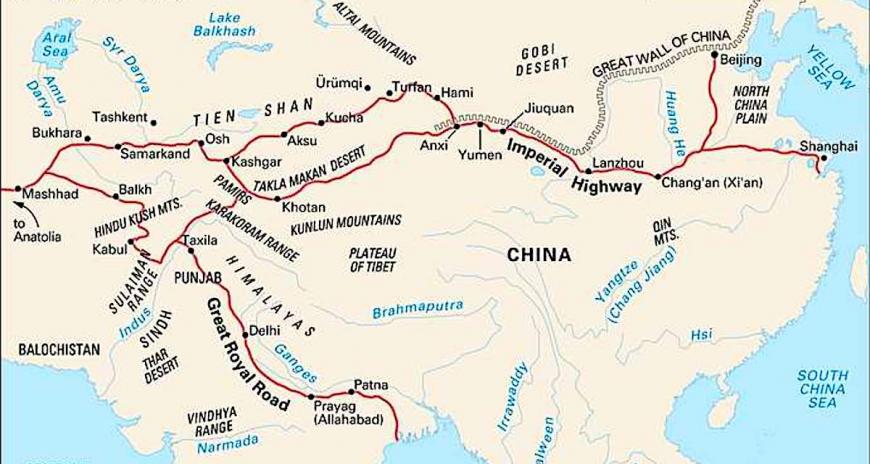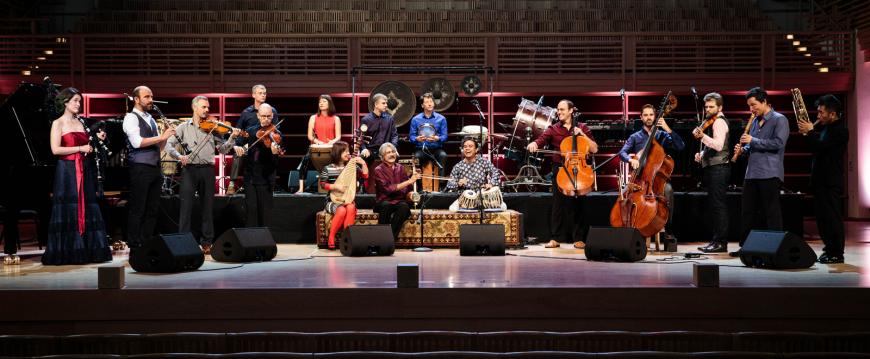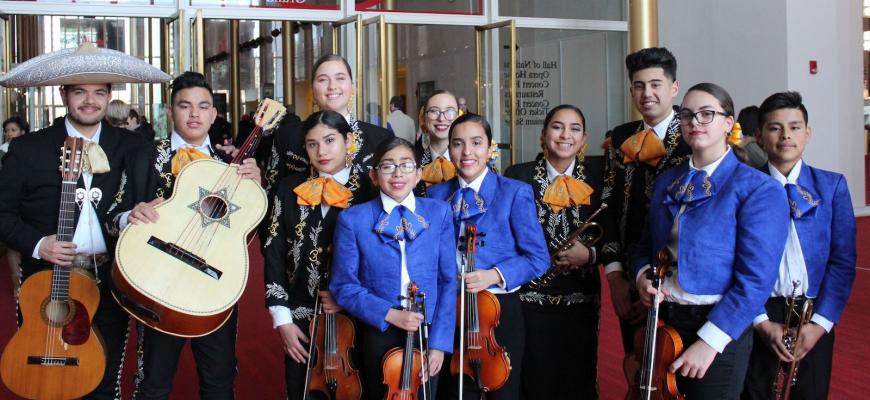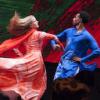
It’s a complex story requiring the reader’s patience while the components are introduced one-by-one:
— Silk Road I (founded in the second century BCE): Developed by China to facilitate silk trade. Originating at Xi’an, the 4,000-mile caravan tract followed the Great Wall of China, bypassed the Takla Makan Desert, climbed the Pamir Mountains, crossed Afghanistan, and went on to the Levant; from there the merchandise was shipped across the Mediterranean Sea. Where there are constant crises today, commerce brought cooperation between tribes, countries, and rulers. (It also brought the Black Death, but that’s another story.)
— Silkroad II (founded in 1998): Yo-Yo Ma’s cultural project for a multiethnic touring group performing the music of the countries along the road, “bridging geographic and cultural boundaries with the universal power of music.” The project is kept alive in spite of Trump Era travel restrictions and the pandemic.
— Silkroad II/A (at various times): Besides the Ensemble, its best-known component, Yo-Yo Ma’s Silkroad also comprises numerous education and social-impact programs, such as the Global Musician Workshop, the Arts and Passion Driven Learning Institute, and others.
— Silkroad II/B (2009–2016, being relaunched now): We arrive at the nub of the story, Silkroad Connect, one of those programs mentioned above.

“Silkroad Connect/2021” is successor to the program that operated until about five years ago. It is a national school program, carrying on the Silkroad philosophy: “Our art is our history. One way or another, we are all deeply rooted in the cultures, musics, and traditions of those who came before us. Silkroad Connect will shine a light on the overlooked and give students the agency to reimagine their place in history.”
Silkroad Director of Education and Social Impact Alicia Robinson traces the program’s development:
Yo-Yo Ma first launched it in 2009, being concerned about the high dropout rates in urban school systems. From his question “How can we help?” Silkroad Connect was born and launched in five New York City public schools.
This multi-year, multidisciplinary initiative sought to explore two questions: “Can engaging students in artmaking inspire them to make deep and meaningful connections between school, their own lives, and the world of diverse cultures in which we all live and what kind of collaboration creates the conditions needed for students, teachers, and Silkroad staff, musicians, and guest artists to learn from one another?”
Students engaged in historical, scientific, and artistic inquiry through Indigo, named for a chemically unique dye with a rich history from Egypt’s mummies to blue jeans. The project culminated in a public performance at City Park Foundation’s Summer Stage. Night at the Caravanserai: Tales of Wonder told the story of travelers along the ancient Silk Road who gathered for a festival of the stars. Middle-school students developed their own performances inspired by what made them excited about learning for the year.
After a hiatus of the past five years, Silkroad Connect is “reevaluated, redesigned, and re-launched to address current needs and to reflect the new Silkroad,” according to the announcement.
The basic tenets of the program remained through the challenges of recent times, including the hiatus before this week’s announcement: developing collaborative relationships with teachers and students and using hands-on arts experiences “to inspire passion-driven learning with a focus on middle school students, a time when student engagement in school drops.”
Now, with Kathy Fletcher, former national director of Turnaround Arts under Michelle Obama, joining Silkroad as executive director, and Rhiannon Giddens as artistic director, the umbrella organization is launching Silkroad Connect/2021 with a streamed gathering on Oct. 7, bringing together participating teachers, students, artists, and partners for the first time.
Four schools will participate in the pilot phase of Silkroad Connect/2021, running on a $125,000 budget: California’s North Monterey County Middle School and John C. Fremont Elementary School in Stockton; Boston’s Orchard Gardens Pilot School, and Parkway Middle School in Broward County, Florida. These schools were selected through an application process open to Turnaround Arts-affiliated schools.

Members of the Silkroad Ensemble — including Kinan Azmeh, Sandeep Das, Hadi Eldebek, Mario Gotoh, Karen Ouzounian, Edward Pérez, Shaw Pong Liu, Mazz Swift, and Michi Wiancko — joined by local artists and culture bearers, will make visits to classrooms over the course of the year, engaging in musicmaking and cultural exchanges that showcase the power of the arts to be used as a tool for social change.
The program will work closely with another Silkroad artistic project now being organized, The American Railroad, which highlights the stories and music of the Transcontinental Railroad, built by African American, Chinese, Native American, Irish, and European immigrants whose history and contributions have been erased from the dominant narrative.
“This exploration will help participants develop a more accurate understanding of this country’s complex historical and musical origins while lifting up voices of those that have been intentionally silenced,” organizers say. The American Railroad plans a commissioning series, a tour of the Silkroad Ensemble, educational programs, and more.

Vocalist-fiddler-banjo player Giddens, best known for reviving Black American string bands, in her position as artistic director of Silkroad, is making The American Railroad one of her initial projects, and there will be a connection with Silkroad Connect.
Giddens’s first thought for the crosscultural music organization’s mission was “the connection between the Chinese music at the heart of Silkroad and the Chinese immigrants who were such a huge part of building the railroad. But I’ve always been interested in the stories we do and don’t tell about the railroad, about African Americans and native populations.”
Yet another participant is Turnaround Arts California. Interim Executive Director Barbara Palley says Fremont Elementary is “a K–8 school committed to using the arts to create entry points for learning for every student. Over the years, they have developed a strong arts education program which has included theater, dance, band, mariachi, visual arts, and arts integration.” Fremont Elementary serves a diversity of students, primarily Latinx; 40 percent are English language learners.

“Through Turnaround Arts and related partnerships, they have trained classroom teachers to integrate arts as a tool for learning across the curriculum,” Palley says and she quotes art teacher Llea Humphries as saying of Silkroad Connect: “This project will help engage students’ learning in a way that will increase the overall cultural awareness of the school. Our vision for our school is to learn through the arts and this project is exactly that.”
Dr. Shana Cole, middle-school social studies teacher, adds that she uses the arts in her teaching to build “an inclusive learning environment and social emotional learning support for my students. I envision this partnership will aid in my understanding and implementation of culturally responsive teaching.”
Turnaround Arts has supported such programs as mariachi, two of which — from Fremont Elementary and Cesar Chavez High School — performed in the National Turnaround Arts Talent Show in Washington, D.C.




